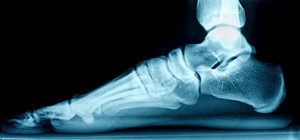
(908) 381-8160Berkeley Heights

Flat feet, a common condition in adults, occurs when the arches of the feet collapse, causing the entire sole to touch the ground. This condition typically advances through several stages, each with its own set of symptoms. In the early stages, some individuals may not experience any discomfort or issues, while others may feel mild pain or fatigue after prolonged standing or physical activity. As flat feet progress, the discomfort can intensify, spreading to the ankles, knees, and lower back. This can result in reduced mobility and chronic pain. In severe cases, the arch completely flattens, and the foot loses flexibility, leading to a more pronounced disability. Recognizing the stages of flat feet is important for appropriate management, as early intervention can bring various choices of treatment to choose from. If you have flat feet, it is suggested that you are under the care of a podiatrist who can guide you toward appropriate relief methods.
Flatfoot is a condition many people suffer from. If you have flat feet, contact Dr. Janet Leicht from New Jersey. Our doctor will treat your foot and ankle needs.
What Are Flat Feet?
Flatfoot is a condition in which the arch of the foot is depressed and the sole of the foot is almost completely in contact with the ground. About 20-30% of the population generally has flat feet because their arches never formed during growth.
Conditions & Problems:
Having flat feet makes it difficult to run or walk because of the stress placed on the ankles.
Alignment – The general alignment of your legs can be disrupted, because the ankles move inward which can cause major discomfort.
Knees – If you have complications with your knees, flat feet can be a contributor to arthritis in that area.
Symptoms
Treatment
If you are experiencing pain and stress on the foot you may weaken the posterior tibial tendon, which runs around the inside of the ankle.
If you have any questions please feel free to contact our office located in Berkeley Heights, NJ . We offer the newest diagnostic and treatment technologies for all your foot and ankle needs.

Foot stress fractures, prevalent among runners, are primarily attributed to overuse, constituting 80 percent of cases. The repetitive forces during running may cause microscopic bone damage, escalating into hairline fractures if adequate recovery time is not provided. Sudden increases in running volume, intensity, or frequency, common in the overtraining syndrome, can make it worse. Running form also plays a role, especially with those who have a pronounced heel strike. However, transitioning abruptly to a forefoot strike or wearing minimal footwear can similarly increase the risk of metatarsal stress fractures. Nutrition is a vital factor in preventing stress fractures of the feet. Low vitamin D levels, specifically during winter, elevate the risk of stress fractures. Runners, especially women, face heightened risk if conditions such as osteoporosis or menstrual cycle-related amenorrhea are present. Additionally, sudden changes in running surfaces, such as switching from trails to roads without proper training, can elevate the risk. Wearing proper footwear is equally as important. Old, ill-fitting shoes that lack proper support can increase bone stress. Balancing training intensity, adopting gradual changes in running techniques, maintaining a nutritious diet, and ensuring proper footwear are key components of a comprehensive approach to foot health and injury prevention. For help in managing foot stress fractures, it is suggested that you schedule an appointment with a podiatrist.
Stress fractures occur when there is a tiny crack within a bone. To learn more, contact Dr. Janet Leicht from New Jersey. Our doctor can provide the care you need to keep you pain free and on your feet.
How Are They Caused?
Stress fractures are the result of repetitive force being placed on the bone. Since the lower leg and feet often carry most of the body’s weight, stress fractures are likely to occur in these areas. If you rush into a new exercise, you are more likely to develop a stress fracture since you are starting too much, too soon. Pain resulting from stress fractures may go unnoticed at first, however it may start to worsen over time.
Risk Factors
Stress fractures do not always heal properly, so it is important that you seek help from a podiatrist if you suspect you may have one. Ignoring your stress fracture may cause it to worsen, and you may develop chronic pain as well as additional fractures.
If you have any questions, please feel free to contact our office located in Berkeley Heights, NJ . We offer the newest diagnostic and treatment technologies for all your foot care needs.

Approximately 60,000 lower extremity amputations are performed annually in the United States in patients with diabetes. This fact makes ulceration, infection, and gangrene a prevalent foot and ankle issue for diabetics people. Many amputations can be prevented through daily foot care habits and regular visits to a podiatrist to monitor foot ulcers. These experts suggest adopting an everyday foot care routine of inspecting the feet thoroughly for any changes in shape, color, sensation, or skin integrity. To prevent complications, podiatrists also recommend a gentle cleaning that involves washing feet in lukewarm water with mild soap, avoiding soaking, and ensuring thorough drying, especially between the toes. Nail care includes trimming nails straight across, avoiding rounding the corners. Callus management suggests gently reducing calluses with a foot file or pumice stone, rubbing in one direction to avoid skin tears. Diabetic patients should opt for cushioned, breathable shoes with soft uppers. Choosing cotton or natural fiber socks over synthetic materials is recommended. If you have diabetes, and are experiencing foot ulcers, it is suggested that you are under the care of a podiatrist who is medically trained to manage this condition.
Limb salvage can be an effective way in preventing the need for limb amputation. If you have diabetes, cancer, or any other condition that could lead to foot amputation if left unchecked, consult with Dr. Janet Leicht from New Jersey. Our doctor will assess your condition and provide you with quality foot and ankle treatment.
What Is Limb Salvage?
Limb salvage is the attempt of saving a limb, such as the foot from amputation. Podiatrists also try to make sure that there is enough function in the foot after the salvage that it is still usable. Diabetes is the number one cause of non-traumatic amputations in the United States. Those with diabetes experience poor blood circulation, which prevents proper healing of an ulcer. If the ulcer is left uncheck, it could become infected, which could result in the need for amputation.
However, there are other causes as well, such as cancer and traumatic injury. Links between higher mortality rates and amputation have been found. This translates into higher healthcare costs, and a reduced quality of life and mobility for amputees. Podiatrists have attempted to increase the prevalence of limb salvage in an attempt to solve these issues.
Diagnosis and Treatment
Limb salvage teams have grown in recent years that utilize a number of different treatments to save the infected limb. This includes podiatrists that specialize in wound care, rehabilitation, orthotics, and surgery. Through a combination of these methods, limb salvage has been found to be an effective treatment for infected limbs, and as an alternative to amputation. Podiatrists will first evaluate the potential for limb salvage and determine if the limb can be saved or must be amputated.
If you have any questions, please feel free to contact our office located in Berkeley Heights, NJ . We offer the newest diagnostic and treatment technologies for all your foot care needs.

Achilles tendonitis is a common injury that affects both athletes and non-athletes alike. It is often the result of repeated stress on the Achilles tendon, the long tendon that connects the calf muscles to the heel. Achilles tendonitis primarily strikes the younger and middle-aged population engaged in sports like running, gymnastics, and basketball. But it can also affect those leading a more sedentary lifestyle. One of the leading causes stems from an abrupt surge in physical activity, leaving the body little time to acclimate to the increased strain. Failure to stretch adequately before engaging in activities such as running or jumping on hard surfaces can increase the risk, particularly for those with tight calf muscles. Footwear choices play a pivotal role in Achilles tendon health. Wearing high heels for extended periods without proper support can contribute to the onset of Achilles tendonitis. Factors like flat feet, obesity, diabetes, high blood pressure, and certain antibiotics also can predispose individuals to this condition. Further, those with excessive pronation or flat arches face an elevated risk due to the heightened demands placed on the tendon during regular walking. Whether involved in regular labor-intensive work or sporadic intense physical activities, individuals must be mindful of the strain placed on their Achilles tendon. If you have pain in the back of the heel, it is suggested that you make an appointment with a podiatrist.
Achilles tendon injuries need immediate attention to avoid future complications. If you have any concerns, contact Dr. Janet Leicht of New Jersey. Our doctor can provide the care you need to keep you pain-free and on your feet.
What Is the Achilles Tendon?
The Achilles tendon is a tendon that connects the lower leg muscles and calf to the heel of the foot. It is the strongest tendon in the human body and is essential for making movement possible. Because this tendon is such an integral part of the body, any injuries to it can create immense difficulties and should immediately be presented to a doctor.
What Are the Symptoms of an Achilles Tendon Injury?
There are various types of injuries that can affect the Achilles tendon. The two most common injuries are Achilles tendinitis and ruptures of the tendon.
Achilles Tendinitis Symptoms
Rupture Symptoms
Treatment and Prevention
Achilles tendon injuries are diagnosed by a thorough physical evaluation, which can include an MRI. Treatment involves rest, physical therapy, and in some cases, surgery. However, various preventative measures can be taken to avoid these injuries, such as:
If you have any questions please feel free to contact our office located in Berkeley Heights, NJ . We offer the newest diagnostic tools and technology to treat your foot and ankle needs.